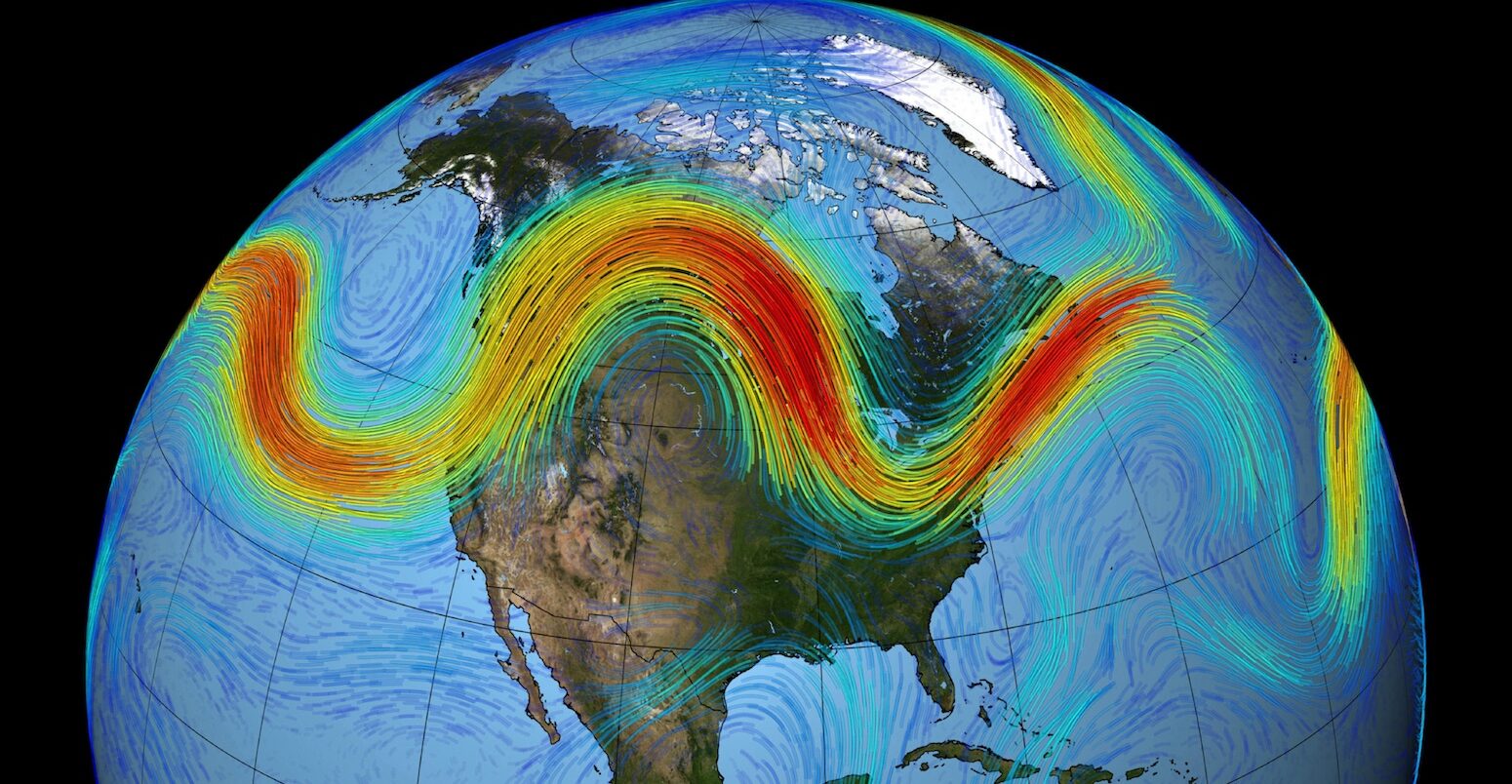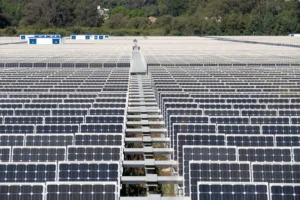
Guest post: Why ‘jet-streak’ winds will get faster as the climate warms

Prof Tiffany Shaw
12.19.23
Prof Tiffany Shaw
19.12.2023 | 10:45amThe Earth’s jet streams play a fundamental role in the speed and direction of weather systems across the world.
This means that they are crucial for understanding extreme weather events and how they will change as the world warms.
Research suggests that upper-level jet-stream winds will accelerate on average as global temperatures rise, but little is known about how their fastest winds – known as “jet streaks” – will change.
In a first-ever study, published in Nature Climate Change, my co-author and I show that fast jet-stream winds will get faster and faster — by around 2% for every degree Celsius the world warms. This means that fast winds will speed up around 2.5 times more than average jet-stream winds.
Furthermore, it means we should anticipate record-breaking jet-stream winds as warming continues.
Our research also reveals that this acceleration occurs because the difference between the density of the air in the tropics and the air at the poles will increase.
While further work will be needed to understand the full impact of our findings, we expect that they will include stronger severe storms and an increase in clear-air turbulence for aircraft passengers.
Fast flowing
The Earth’s jet streams are fast-flowing narrow bands of wind high up in the atmosphere. The fastest jet-stream winds blow from west to east and occur in the upper troposphere, around 10-12 km above the surface.
Jet streams are important because they shape Earth’s surface climate by steering weather systems, and so they can affect where severe weather occurs. For example, the regions around fast upper-level jet-stream winds – called “jet streaks” – have been linked to the occurrence of storms, tornadoes, hail and severe winds.
Jet streams are also key for air travel, providing an ideal tailwind for aircraft. Previous research has established that the average wind speed of the upper-level jet stream increases under climate change. This has the potential knock-on effect of causing more clear-air turbulence for aircraft passengers.
Our research was inspired by reports in 2019 of transatlantic flights breaking speed records. As a result, we set out to find out how climate change will affect fast jet-stream winds.
Little is known about how fast upper-level jet-stream winds – classed as those above the 99th percentile – could change as the world warms. Furthermore, no mechanism has been proposed to explain why fast jet-stream winds would change.
Fast-get-faster response
We started by examining how physics-based climate models project fast jet-stream winds would change. We used models from the sixth Coupled Model Intercomparison Project (CMIP6), which were developed for the latest assessment by the Intergovernmental Panel on Climate Change (IPCC).
In these model projections, we compare daily jet-stream winds that exceed the 99th percentile at the end of the 20th (1980-2000) and 21st (2080-2100) centuries under a very high emissions scenario (SSP5-8.5). We also compare wind speeds for the near-term in an intermediate scenario (SSP2-4.5), which is broadly in line with the trajectory of global emissions today.
Our analysis finds that climate change makes the fastest upper-level jet-stream winds get faster and faster – by about 2% for every degree Celsius the world warms. This means that fast winds will speed up around 2.5 times more than average jet-stream winds.
We refer to this as the “fast-get-faster” response and we find the effect in all seasons of the year.
You can see this in the chart below, which shows the percentage change in the fastest winds at around 12km altitude per degree of warming across different latitudes (from 80 degrees south on the left-hand side to 80 degrees north on the right).
While the fast winds increase at all latitudes, those in the “extratropics” – that is, between around 20 to 60 degrees, where jet streams are found – are the fastest to begin with and thus get the largest boost under climate change.

Moist air
In addition to quantifying the “signal” of long-term change, we also provide a physical explanation for why it occurs.
Bridging the gap between simulating the response to climate change using models and understanding the causes helps us justify that this is a signal to take seriously.
The first step we take is to simplify the model to help isolate what physics underlies the signal. When the model is run without ocean currents and without land, we still find the signal.
This suggests that the fast-get-faster signal emerges in a world formed entirely of water. The result implies that the physics of a moist atmosphere is key to explaining the fast-get-faster response.
The second step we take is to use our physical understanding of the jet stream to quantify the connection between moisture and the signal.
The jet stream exists because of the contrast of density between air at the equator, which is warm and light, and air at the pole, which is cold and dense. We connect this contrast to the response of moisture under climate change.
In particular, in today’s climate, tropical air holds more moisture than air at the poles because it is warmer. Climate change exacerbates this contrast because hotter air can hold much more moisture than colder air.
While the air at the poles is warming more rapidly than in the tropics, hotter air can hold so much more moisture than cold air that the overall density difference still increases.
This effect increases the density contrast under climate change, accelerating the jet-stream winds. Importantly, the effect is multiplicative – namely, fast jet-stream winds today that involve a steep density contrast would be boosted much more in the future than slower jet-stream winds that involve a shallower density contrast.
Thus, our results project record-breaking jet-stream winds.
Emerging signal
When we look at the recent past (1980–2022) using reanalysis data – which combines physical observations with model simulations – we do not find that the fast-get-faster signal has yet emerged from the noise of natural variability.
However, all the climate models in our study suggest that a statistically significant fast-get-faster signal will emerge for the extratropics in both the southern and northern hemispheres by the middle of this century.
Specifically, under SSP2-4.5, all climate models project the signal in the southern and northern hemispheres extratropics by 2038 and 2048, respectively. Under SSP5-8.5, this is slightly earlier – by 2035 and 2045, respectively.
This is shown in the figures below, which show the percentage change in fast jet-stream winds, relative to 1980-2000, from 1980 to 2050 in the southern (top) and northern (bottom) hemispheres, excluding the tropics. The lines indicate reanalysis data (black) and climate models projections under SSP2-4.5 (green) and SSP5-8.5 (orange).
The charts on the right-hand side show the trend, per degree of warming, for each model (green and orange) and the reanalysis data (black). Closed and open circles indicate results that are and are not statistically significant, respectively.

We are now working to better understand the knock-on impacts of these changes in the jet stream for severe weather.
New climate models are allowing scientists to look in greater detail at how extreme weather is – and will – change. Ultimately, unravelling the impacts of climate change on winds at regional scales will help society better prepare for the implications of a warming world.
Shaw, T. A. and Miyawaki, O. (2023) Fast upper-level jet-stream winds get faster under climate change, Nature Climate Change, doi:10.1038/s41558-023-01884-1




